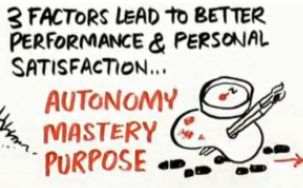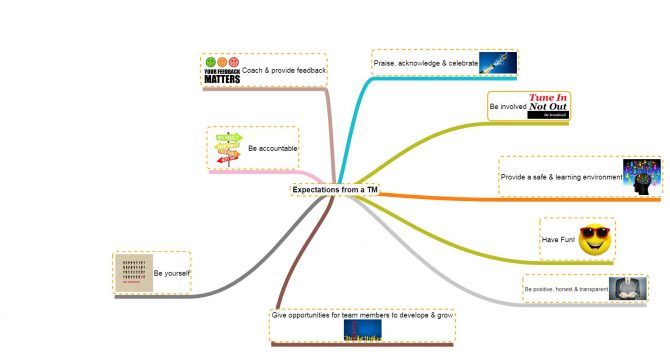Our agile journey so far – Part 4: Servant leaders
This is the fourth post about our growth story. In the previous blog post we explained how bol.com realized an organizational change with YBIYRIYLI (You build it, you run it, you love it). Now it’s time to take a closer look at the more personal part. How can a company make sure employees stay happy and motivated? What does it take to be a leader in a company with autonomous teams? And how did bol.com take on this challenge?
This post is written by Roy Gielen, an agile enabler who interviewed several persons at bol.com on this topic. We want to thank him for helping us to put our story on paper, making it possible to share our journey with you!
Servant leaders
(by Roy Gielen)
Acknowledge what drives people
The approach bol.com uses (YBIYRIYLI) proofs to be successful: starting small and making big steps towards autonomy. But only an approach is not enough to accomplish your goals and ambition. What you need is motivated people. The employees are not only the founders of this successful approach, they are also part of the change of the months and even years ahead at bol.com. The recipe for this enormous change at bol.com consists of motivated people with ingredients like purpose, mastery and autonomy (ownership).

As Daniel H. Pink says in his book Drive, ‘people want to believe in what/who they are working for (purpose). They want to get better at what they are doing every day (mastery) and they want some say (ownership) in how they do that work (autonomy).’
Bol.com acknowledges like no other that, if they want to land on the moon, they need to have astronauts who have a yearning to do what they do in the service of something larger than themselves - they need to have the urge to get better and better at something that matters and dare (and are encouraged) to take ownership.
Provide freedom within a framework

Autonomy will help bol.com to let the organization grow further without too many growing pains. But autonomy does not mean that all dependencies will be gone, there is still a need to be aligned. Menno Vis, IT Director Software Development at bol.com, calls this ‘freedom within a framework’. Although each fleet or space has its own mission, they all need to be aligned with product strategy, company priorities and other fleets or spaces. Ground rules at bol.com for example are a retrospective, demo, stand up and a viable product at the end of a sprint.
The team with five feet
According to Spotify’s Henrik Kniberg, the key principle is: ‘Be autonomous, but don't suboptimize! Be a good citizen in the Spotify ecosystem.’ This principle also applies to the situation at bol.com. The goal at bol.com is to create highly cohesive, but loosely coupled cross-functional teams, fleets and spaces. These cross-functional teams drive autonomy because all the knowledge is fostered within the team. Based on this knowledge teams can make their own decisions and this reduces overhead. Every stakeholder is present in the team to make a decision and to keep progress. Menno believes in ‘the team with five feet’. He says that every individual has his or her own expertise, but he or she also needs to know something about the expertise of his or her colleague on a high level. According to the American social psychologist Tuckman, ‘mixing expertise creates a mutual understanding, builds trust and fosters the collaboration process which is important in team development (storming, norming, performing).’
How to guide and lead
Bol.com tries to create a culture of high alignment and high autonomy, because they believe that alignment enables autonomy. The stronger alignment they have, the more autonomy they can afford to grant. Bol.com experiences that they are not there yet, but they keep experimenting how to pursue that goal to improve their way of working.

An autonomous environment requires a different style of leadership. Managers need to be transformed or replaced by servant leaders; people who can support and coach the teams and are collaborative leaders between different parties in the organization. These leaders need to communicate what problem needs to be solved and why. The fleets collaborate with each other to find the best solution. To create such an autonomous culture I believe the combination of two key ingredients is crucial for being a servant leader:
- Collaborative leadership → supports alignmentAs a collaborative leader you support and coach your team and you manage the team boundaries and the new connections and existing dependencies with other teams.
- A secure base → supports autonomy
Kohlrieser (Care to Dare) describes the perfect fit for a secure base: ‘A person, place, goal or object that provides a sense of protection, safety and caring and offers a source of inspiration and energy for daring, exploration, risk taking and seeking challenge.’ As Menno Vis says: ‘It is all about pull, not push!’ Trigger people and encourage them to come up with new initiatives.
To go faster, you need to let go
It’s clear that you don’t become a servant leader overnight, it can be a culture shock for a leader. According to Menno Vis: ‘For a leader, one of the most difficult aspects in behavioral change is the courage to let go. But to go faster, you need to let go.’ Bol.com expects the following characteristics from a servant leader, all in line with bol.com’s DNA:

In his book Care to Dare Kohlrieser describes nine characteristics of a secure base leader. When you compare these with the characteristics above it is no coincidence that bol.com is successful in this part or at least has a good starting point. Of course this is not rocket science, but it is a nice example that theory proves the success of practical choices.
The next blog post will be the last in this series about the success of bol.com, in which we'll take a look at the future. How we can make sure the success will last.
In case you missed the previous blog posts, you'll find them here:
Part 1: bol.com to the moon!
Part 2: involving everyonePart 3: you build it, you run it, you love it
About the writer
Roy Gielen is an agile enabler, personal coach and change manager at Ctree BV. He is currently studying for an MBA and writes about successful responsive organizations. Thanks to this combination of skills he guides organizations and their individuals in their journey to responsiveness, keeping in mind that every change starts with the individual. He future proofs organizations so they are ready to adapt in this fast changing world.